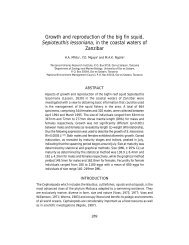gpa_east_africa_case.. - GRID Africa GeoPortal - UNEP
gpa_east_africa_case.. - GRID Africa GeoPortal - UNEP
gpa_east_africa_case.. - GRID Africa GeoPortal - UNEP
You also want an ePaper? Increase the reach of your titles
YUMPU automatically turns print PDFs into web optimized ePapers that Google loves.
Environmental economists take a comprehensive look at value, using the concept of TotalEconomic Value (TEV) to capture not only the Use Value (production value) but primarily theelusive Non-Use Value (conservation value) of environmental resources.Environmental Valuation of ResourcesTotal Economic Value (TEV) of a resource consists of:• Use Value (UV), and• Non-use Value (NUV)Use Values may be broken down into• direct use value (DUV),• indirect use value (IUV), and• option value (OV)Non-use value includes• Existence Value (Biodiversity value).Total economic value is therefore:TEV= UV + NUV or, TEV = [DUV + IUV + OV] + NUVSource: Based on D. Pearce, et. al. Introduction to Environmental Economics, 1996.The breakdown and terminology may vary, but generally include the following By disaggregatingthe value of a resource or a site into various components, the valuation problembecomes far more tractable.The following diagram may offer an illustration of the classification of the different categoriesof services and benefits which should be included in the definition of coastal resources.Categories of ValueA. Use Services B.Non-use ServicesDirect use Indirect Use Option ExistenceExtraction and Recreation Future use of Biodivesity andBuilding development Direct and EcologyIndirect servicesAestheticsTimberPopulation visits toSocial wealthcoastQuarrying Aesthetic enjoyment Natural history educationFisheries Habitat National heritageTourism accommodation Marine SpeciesTourism servicesCoastal protectionMarinas Protection againsterosionSource: Adapted from David Pearce et.al., Introduction to Environmental Economics.Direct or Extractive Use Value. Extractive use value derives from goods which can beextracted from or built on coastal sites, such as the use value of timber extracted from coastalforests, fishing from the sea, sand extracted from the beach, hotels and restaurants built onand near the beach, etc. This category of value is generally the easiest to measure byobservable quantities and prices of products in a market context. The task of environmentaleconomists is to record the quantity and price of goods dependent on coastal environmentalquality (productivity approach). For example, tourism accommodation and prices reflect theproductivity of the quality of coastal environment; over-building on the coast will reduce theuse productivity of a particular coastal area.Indirect or Non-Extractive Use Value. Non-extractive (indirect) use value derives from theservices provided by a coastal area. For example, wetlands filtering water, improving waterquality for downstream users, national parks providing opportunities for recreation, etc. Theseservices have value without any goods being extracted, produced or harvested. The value ofnon-extractive use services results from people visiting particular coastal area with particularquality characteristics. Measuring non-extractive use “aesthetic value” is often far moredifficult than measuring extractive use value because the ‘quantities’ of the service providedare often hard to measure and market prices often do not exist. The task of environmentaleconomics is to find proxies for valuing such services. This category of use value, particularlyFinal Draft Report – Cost Benefit Case StudiesGPA Strategic Action Plan on Sewage, October, 20009



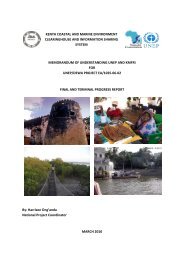
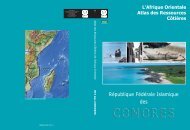
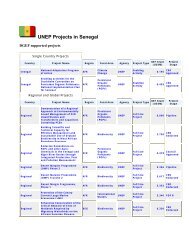

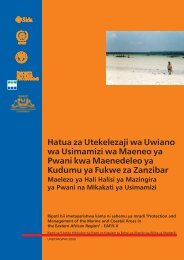
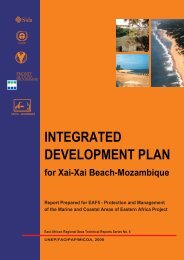
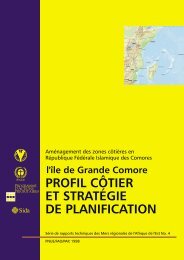
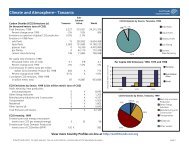

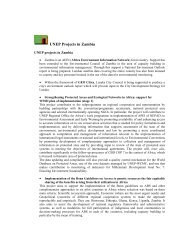
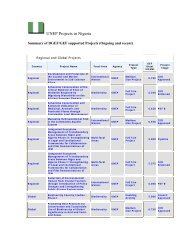
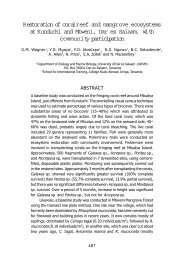
![Please Click to download [English] - GRID Africa GeoPortal - UNEP](https://img.yumpu.com/30633391/1/184x260/please-click-to-download-english-grid-africa-geoportal-unep.jpg?quality=85)
